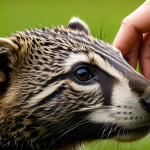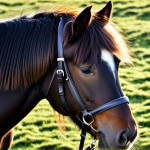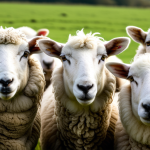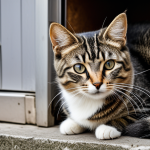Essential Winter Health and Safety Checklist for Alaskan Malamutes
Ensuring Alaskan Malamute care during winter requires addressing specific health and safety concerns unique to cold climates. A tailored health checklist focuses on preventing hypothermia, frostbite, and other cold-related issues common in winter dog safety. Monitoring body temperature and behaviour daily can catch early signs of distress, such as shivering or lethargy, which indicate hypothermia in dogs and require immediate action.
A clear, actionable winter safety checklist includes:
A lire en complément : Critical Parvovirus Symptoms in Doberman Pinschers: Urgent Care Tips to Safeguard Your Dog’s Health
- Regularly inspect paws for ice, cracks, and salt injuries.
- Keep grooming consistent to maintain coat insulation.
- Provide shelter that blocks wind while allowing ventilation.
- Adjust feeding practices to meet increased energy demands.
- Use protective gear like boots and jackets when necessary.
Common winter health issues like frostbite usually affect extremities: ears, paws, and tail. Recognizing early symptoms—pale or cold skin with numbness—is crucial. Preventive measures such as limiting outdoor exposure times and using paw balms protect against drying and cracking. This comprehensive approach to winter dog safety enhances your Malamute’s health and comfort effectively.
Essential Winter Health and Safety Checklist for Alaskan Malamutes
Vital steps to protect your Malamute in winter
Lire également : Essential Tips for Creating a Nutritious Raw Diet for Your Growing Boxer Puppy
Proper Alaskan Malamute care during colder months demands a focused winter dog safety approach. This specialized health checklist begins with monitoring your dog’s exposure time. Limit outdoor activities during extreme cold to prevent hypothermia and frostbite. Watch closely for signs such as shivering, lethargy, or pale extremities.
Ensure your Malamute’s shelter blocks harsh winds while allowing airflow to reduce moisture buildup. Regularly check paws for ice accumulation and salt irritation, which can cause painful cracks. Applying protective balms before and after walks greatly improves paw health.
Adjust feeding routines to support increased energy needs during winter. More calories help maintain body heat and stamina. Hydration is equally important; water bowls should be checked frequently to avoid freezing.
Finally, incorporate protective gear like boots and snug jackets based on weather severity. Although Malamutes have thick coats, additional insulation during icy conditions offers added safety.
Consistent use of this health checklist promotes longevity and comfort throughout the cold season, directly enhancing your Malamute’s winter wellbeing.
Grooming Practices for Alaskan Malamutes During Winter
Maintaining coat health to combat harsh conditions
Effective Malamute grooming during winter is crucial for preserving your dog’s natural insulation. These dogs have thick double coats designed to repel cold, but dry winter air can cause fur and skin to dry out, leading to discomfort and possible irritation. Regular brushing helps remove loose undercoat and prevents matting, which can trap ice and snow, causing painful clumps and skin issues.
Bathing should be infrequent and done with moisturizing shampoos suited for winter dog coat care. Overbathing strips oils essential to maintaining water resistance in their fur. Paying close attention to drying your Malamute thoroughly after baths or wet weather helps avoid chilling and skin problems.
Ice buildup between the pads and fur is a common issue. Regularly check paws and fur for snow or ice chunks. Proper grooming routines aid in preventing ice balls from forming, which can cause discomfort and restrict movement. Combining grooming with protective paw treatments ensures your Malamute stays comfortable and active.
Thorough and consistent pet hygiene winter practices maintain skin flexibility and coat strength, vital for your Malamute’s overall winter dog safety and wellbeing.
Nutrition and Feeding Adjustments in Cold Weather
Supporting energy and warmth through diet
Adjusting your Malamute’s diet during winter is vital within Alaskan Malamute care. Their thick coats and active nature increase calorie demands in cold weather. The key is providing a Malamute winter diet rich in nutrients and calories to sustain body heat and energy.
Start by increasing daily food intake moderately to match higher metabolic needs. Focus on balanced meals with quality proteins and fats, which help maintain endurance and warmth. Omega-3 fatty acids also support skin and coat health in dry winter air. Incorporate nutrient-dense options like fatty fish, high-grade kibble, or specially formulated winter dog foods.
Hydration remains crucial; even in cold weather, make sure your Malamute drinks adequate water. Check bowls regularly to prevent freezing, which can reduce water intake and lead to dehydration.
Offering smaller, frequent meals helps maintain energy levels throughout the day. Monitoring your dog’s weight and activity is essential to adjust portions properly, preventing underfeeding or excessive gain.
This thoughtful dog nutrition winter approach directly enhances winter dog safety by supporting resilient health and stamina during the challenging cold months.
Outdoor and Indoor Exercise Routines for Winter
Safe ways to keep your Malamute active despite the cold
Maintaining a consistent Malamute winter exercise regimen is essential for your dog’s physical and mental health during cold months. Outdoor activities like walking and sledding provide vital stimulation but require careful timing and attention to winter dog safety. Keep sessions shorter when temperatures plunge to prevent cold stress or hypothermia. Look out for signs like limping, excessive shivering, or reluctance to move.
Inside, create engaging environments to supplement reduced outdoor time. Interactive toys, fetch games in hallways, or gentle training sessions can maintain fitness and prevent boredom. Be mindful to avoid overexertion, especially if your dog wears protective gear such as boots or jackets.
Regular breaks during outdoor exercise let your Malamute warm up and dry off. After walks, thoroughly check paws for ice or salt residues, part of a broader health checklist that safeguards your dog’s comfort. Adapt routines based on weather—on icy or snowy days, modify activities to limit risks.
Balancing Alaskan Malamute care between indoor and outdoor options ensures consistent exercise without compromising safety, helping your dog thrive all winter.
Recognising and Preventing Hypothermia and Frostbite
Key signs and proactive measures for cold injuries
Hypothermia signs in dogs include persistent shivering, lethargy, weakness, and pale or bluish gums. For Alaskan Malamute care, recognizing these quickly is crucial. If you notice these symptoms, bring your dog indoors immediately and warm them slowly using blankets; avoid direct heat, which can cause shock. Seek veterinary help if symptoms worsen.
Frostbite commonly affects extremities: ears, paws, and tail. Early signs include cold, pale skin that may later turn red or blister. Promptly check these areas after outdoor exposure. Preventing Malamute cold injury involves limiting time outside in severe cold, especially in wet conditions.
Preventive strategies include using protective boots and jackets, and providing insulated shelter away from wind. Apply paw balms to protect skin and reduce ice buildup. In emergencies, gently warm frostbitten areas with warm (not hot) water, then dry thoroughly.
A detailed health checklist for winter dog safety should focus on these symptoms and routines, enabling owners to act swiftly and maintain their Malamute’s winter wellbeing with confidence.
Essential Winter Health and Safety Checklist for Alaskan Malamutes
Safeguarding your Malamute through cold challenges
Effective Alaskan Malamute care in winter hinges on a detailed health checklist addressing cold-specific risks. Start by monitoring outdoor exposure; limit time during severe cold to prevent hypothermia and frostbite. Observe your dog for shivering, lethargy, or pale ears and paws—early warning signs demanding prompt attention.
Maintaining dry, wind-protected shelter is vital for winter dog safety. Ensure bedding stays insulated and moisture-free to avoid chilling. Check paws frequently, removing ice or salt that can cause painful abrasions. Application of protective balms reduces cracking and guards against chemical irritants used for de-icing.
Nutrition adjustments support resilience: increase calorie intake to fuel body heat. Adequate hydration remains crucial—frozen water bowls can cause dehydration. Incorporate high-quality proteins and fats for sustained energy through harsh weather.
Lastly, integrate protective gear tailored to conditions, including boots and insulated jackets. While Malamutes’ thick coats offer natural defense, added insulation enhances safety on extreme cold days.
Following this actionable checklist combines prevention and care, creating a solid foundation for your Malamute’s winter wellbeing and longevity.
Essential Winter Health and Safety Checklist for Alaskan Malamutes
Critical actions for maintaining wellbeing during cold months
Proper Alaskan Malamute care in winter requires a detailed health checklist targeting common risks. Start by limiting outdoor exposure during freezing temperatures to protect against hypothermia and frostbite, conditions frequently seen in cold climates. Observe your Malamute closely for shivering, unusual lethargy, or pale extremities—early warning signs demanding swift intervention.
Shelter plays a crucial role in winter dog safety. Provide a space that is insulated from drafts yet well ventilated to prevent dampness, which can compromise warmth. Bedding should be dry and elevated from cold floors to preserve body heat.
Paw health is paramount: regularly check for cracks, ice buildup, or damage caused by salt and de-icers. Use protective balms to maintain skin moisture and consider boots for added protection during walks on harsh terrain.
Nutritionally, increase calorie intake with balanced meals rich in proteins and fats to meet elevated metabolic demands. Hydration must be maintained by regularly supplying fresh water, preventing dehydration from frozen bowls.
Following this comprehensive health checklist ensures proactive prevention and promotes your Malamute’s health and safety throughout severe winter conditions.
Essential Winter Health and Safety Checklist for Alaskan Malamutes
Safeguarding health with precise winter care
Proper Alaskan Malamute care in winter prioritizes preventing cold-related health problems through a detailed health checklist. First, monitor your dog’s outdoor exposure closely; limit time in freezing temperatures to reduce risks of hypothermia and frostbite. Winter dog safety also means observing behavioral changes such as shivering, weakness, or pale ears and paws, which indicate early stages of cold injury. Immediate warming and veterinary evaluation are essential if these signs appear.
Maintain a dry, insulated shelter that blocks wind but prevents moisture buildup, a key factor in chilling and illness. Regularly inspect paws for ice buildup, cracks, or salt-induced irritation. Applying paw balms protects against drying and cracking, while boots can shield pads during harsh walks.
Nutrition supports winter safety by increasing calorie intake with balanced, high-quality proteins and fats to meet higher energy demands. Ensuring fresh, unfrozen water is always available prevents dehydration, a common winter hazard.
This health checklist combines vigilant monitoring, proper shelter, paw protection, and nutrition adjustments—all vital steps in comprehensive Alaskan Malamute care aimed at maximizing your dog’s winter wellbeing.








